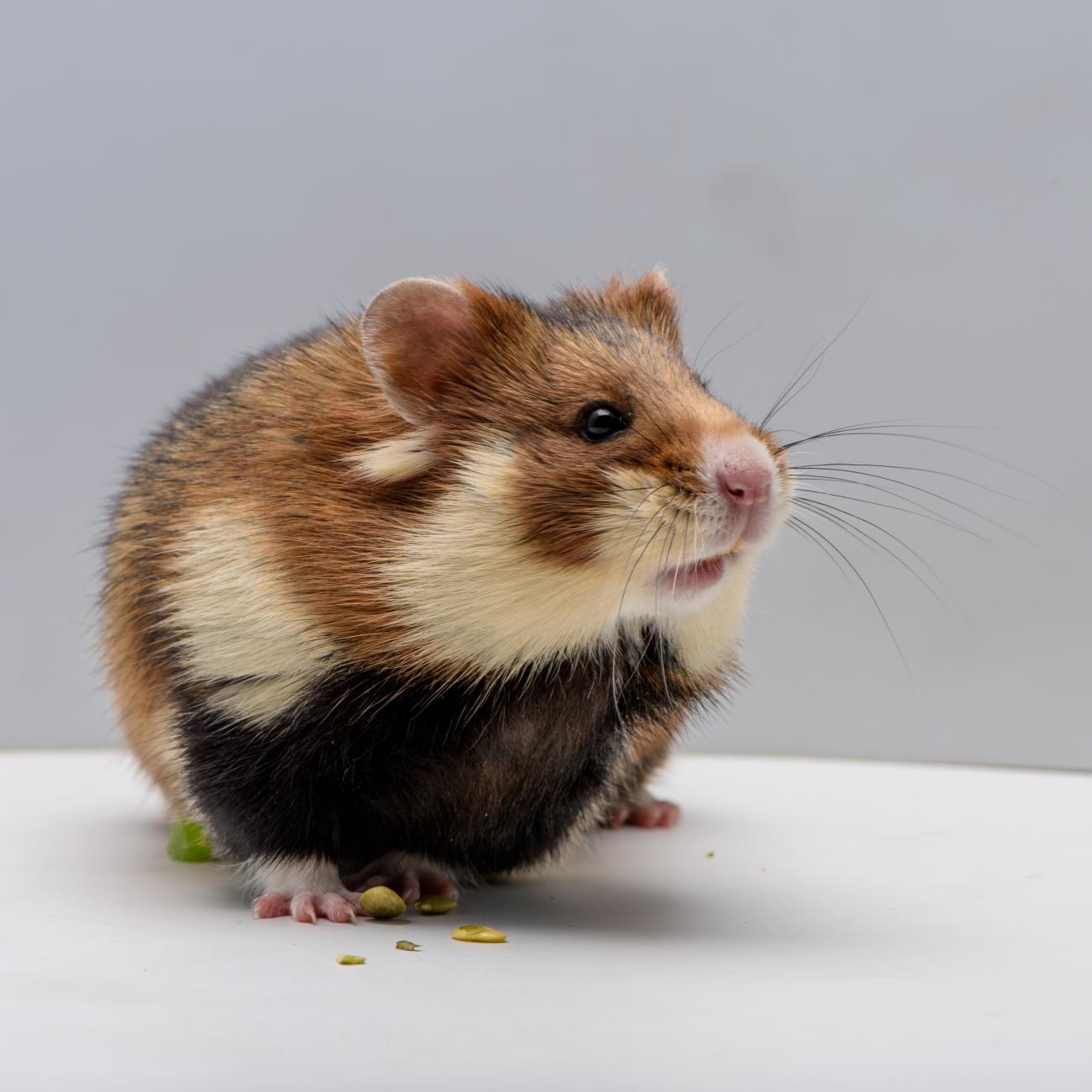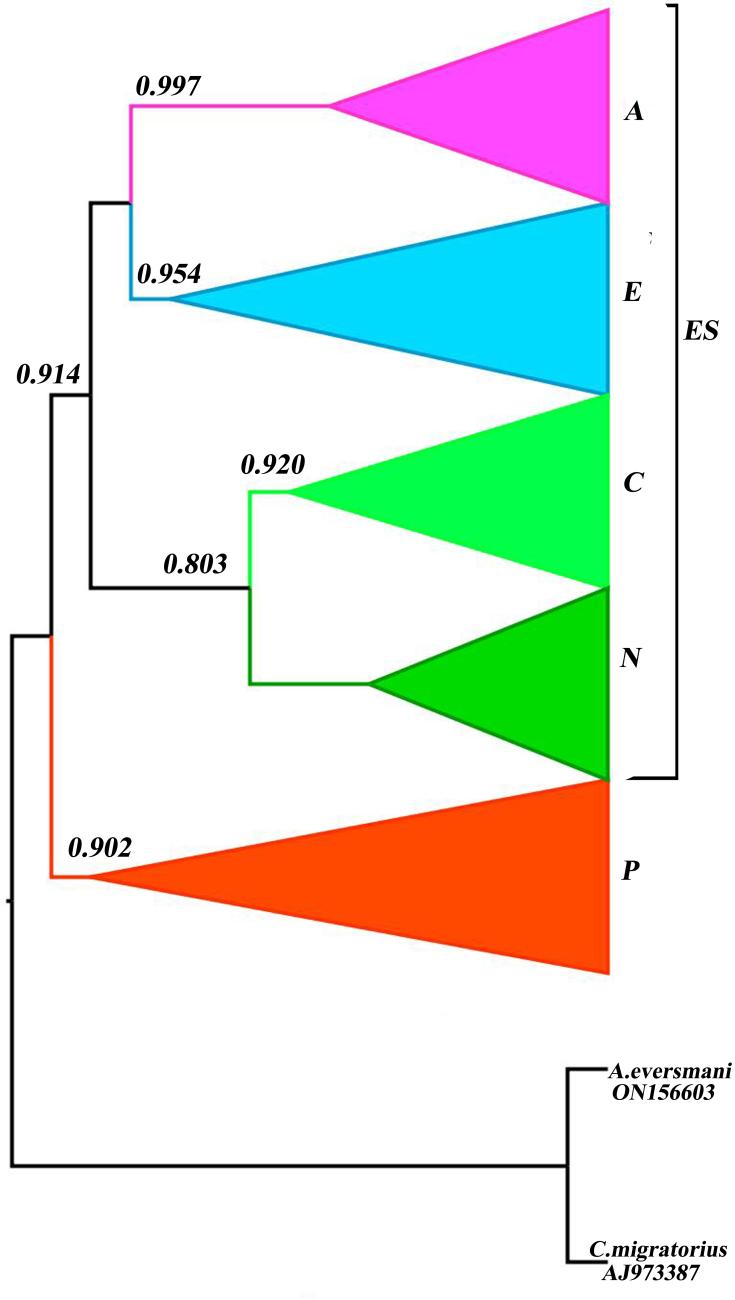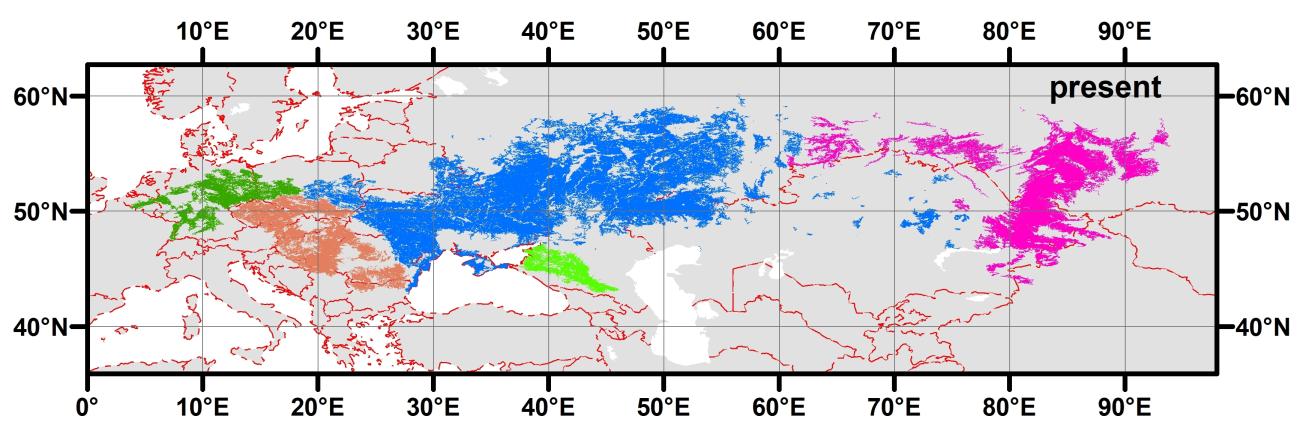Using the Paleoenvironmental Distribution Modeling (SDM) method, we reconstructed the range history of the largest member of the Cricetinae subfamily, the common hamster (Cricetus cricetus).

This abundance of this species in natural biotopes has harshly declined over the past 50 years, which nominated it for the IUCN International Red List with the status of threatened in 2020 (Banaszek et al., 2020). Over the past five years, the authors have carried out 7 expeditions across the territory of Russia and Kazakhstan, collected data on the modern distribution of this species and a lot of material for molecular genetic analysis. It is shown that the phylogeographic structure of the common hamster throughout its giant range (more than 6 million sq. km) includes five main phylogroups: "Pannonia", "North", "E", "Caucasus" and "Altai".

gene. Numbers indicate branch support
The latter was highlighted in this work. The phylogroup "Altai" occupies the easternmost part of the range from the Trans-Urals in the west to the Krasnoyarsk Territory in the east and covers an area of about 600 thousand square meters. km.
The formation of the basis of the modern phylogenetic structure of the species was completed, probably by the end of the first half of the Late Pleistocene. The SDM method showed that the maximum expansion of the potential range of Cricetus cricetus occurred during the interglacials - the Mikulin (Eemian) and the Atlantic Optimum of the Holocene.

a) the period of maximum expansion of the range (120 thousand years ago).
As shown by paleoclimatic reconstructions, during the entire cold period of the Late Pleistocene, the range was reduced and fragmented into refugia due to the reduction and fragmentation of areas suitable for habitation.

Fig.4: Scheme maps of the range of the common hamster, built using the SDM method:
b) during the period of narrowing and fragmentation of the range (20 thousand years ago).
The ancestral forms of locally distributed mitochondrial lineages diverged and spread during the period from the LGM to the Atlantic optimum.
This conclusion is fundamentally at odds with previous ideas about the expansion of the range of this species during cold epochs (Banaszek et al., 2015; Neumann et al., 2005; Korbut et al., 2019). Our hypothesis was confirmed by the analysis of paleontological remains (more than 400 finds).
The use of an integrated approach (paleoreconstruction, paleontological finds and genetic analysis of modern material) indicates that the current climatic conditions are optimal for the existence of the species, and the observed sharp decrease in its abundance in natural biotopes indicates the leading role of anthropogenic factors in this process.

Feoktistova N.Yu., Meschersky I.G., Shenbrot G.I., Puzachenko A.Yu., Meschersky S.I., Bogomolov P.L., Surov A.V., Phylogeography of the common hamster (Cricetus cricetus), paleoclimatic reconstructions of Late Pleistocene colonization Running title: Phylogeography of the common hamster // Integrative Zoology.2022
Related materials:
Ministry of Education and Science: "Ordinary-unusual hamster: scientists have reconstructed the history of the habitat of the Red Book species of rodent"
RAS: "The history of the range of the Red Book species Cricetus Cricetus has been reconstructed"
